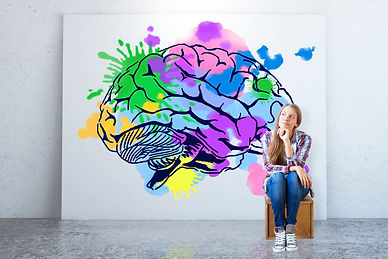
TPC-Mindset Reset!
How TPC Helps You Overcome Addictions: Rewiring Your Mind for Lasting Change
Addiction is often deeply tied to habitual thought patterns and emotional responses that drive individuals to seek temporary relief or pleasure.
Thought Process Conditioning (TPC) offers a powerful cognitive framework that helps individuals break free from addiction by addressing the root causes—their thoughts and mental images (TMI).
By transforming the way you process, perceive, and project thoughts, TPC enables you to rewire the mental patterns that sustain addictive behaviours and replace them with healthier alternatives.
How TPC Helps You Overcome Addictions:
-
Identify Addiction-Triggering TMI Patterns (TPC-2D Observer)
The first step in overcoming addiction is identifying the thought patterns and mental images that fuel the compulsive behaviour. -
-
TPC-2D Observer is designed to help you:
Example:
A person struggling with alcohol addiction might feel stressed at the end of the day and immediately think, “I deserve a drink.” This thought leads to a mental image of drinking, which reinforces the craving. -
Detect the internal triggers that lead to cravings (e.g., stress, boredom, loneliness).
Recognise the mental images associated with addiction, such as visualizing the act of using a substance or engaging in a habit.
Become aware of the thoughts that justify or rationalize addictive behaviours (“I need this to relax” or “Just one more time”).
-
Challenge and Reframe Addiction-Driven Thoughts
Once you’ve identified the thought patterns driving addiction, the next step is to challenge them. Ask yourself:Example:
Instead of accepting the thought “I need this to feel better,” challenge it by asking, -
-
“Will this really make me feel better in the long run, or will it just add to my problems?”
Are these thoughts based on reality, or are they just a justification for the behaviour?
What are the long-term consequences of following through with this addictive behaviour?
Are there healthier alternatives to cope with stress or cravings?
-
Replace the Craving-Induced TMIs with Positive, Healthy Mental Images (TPc-guided imagery)
TPC helps you replace addictive thought patterns with healthier alternatives using TPC-Guided Imagery:Example:
When a craving hits, visualize yourself going for a run or calling a supportive friend instead of giving in to the addiction. See yourself happy, clear-headed, and in control of your life. -
Visualize yourself engaging in healthier coping mechanisms (e.g., exercising, meditating, spending time with loved ones).
Replace mental images of engaging in addictive behaviour with images of yourself feeling strong, in control, and free from addiction.
Use positive affirmations and mental imagery to reinforce your commitment to sobriety or healthier habits.
-
Reinforce New Habits with TPC-4P (Process, Perception, Project, Produce)
-
TPC-4P provides a structured method to reinforce new, healthy thought patterns and behaviours:This 4P process helps you stay committed to your goals and provides the mental framework needed to resist temptations and develop lasting changes.
-
-
Process: Acknowledge the thoughts and mental images that trigger your cravings, and consciously process them with awareness. -
-
Perception: Shift your perception from viewing addiction as a necessary escape to seeing it as a destructive force in your life.
-
-
Project: Project confidence and strength by visualizing yourself successfully overcoming cravings and living a healthier, addiction-free life.
-
-
Produce: As you continue to practice these new mental habits,
-
-
you’ll produce positive outcomes—improved health, stronger relationships, and greater emotional stability.
-
-
Practical Applications of TPC for Overcoming Addictions:
Substance Abuse:
If you struggle with substance abuse, TPC-2D Observer helps you identify the triggers that lead to cravings, such as stress, social situations, or emotional distress. By using TPC-Guided Imagery, you can replace these cravings with positive mental images of yourself engaging in healthier activities, like exercising or spending time with supportive people.
Behavioural Addictions (e.g., Gambling, Internet Addiction):
With TPC, you can break the cycle of compulsive behaviours by recognizing the thought patterns that lead to engaging in the addictive activity. For instance, instead of thinking, “I’ll win next time,” challenge the thought by asking,
“Is this behaviour benefiting me, or is it causing more harm?”
Emotional Eating:
Emotional eating is often triggered by stress or negative emotions. TPC helps you recognise these triggers and reframe your thoughts to cope with emotions in healthier ways. Instead of using food as comfort, you can visualize yourself managing stress through mindful breathing, exercise, or creative outlets.
How TPC Transforms Addiction:
TPC doesn’t just address the surface behaviours of addiction—it tackles the underlying thought patterns and emotional responses that fuel the addictive cycle. By utilizing tools like TPC-2D Observer to track your thoughts and TPC-Guided Imagery to reshape your mental landscape, you can gradually shift from destructive habits to healthy, life-affirming behaviours. With the TPC-4P model, you create a mindset that fosters self-control, resilience, and positive action, helping you overcome addiction for good.
By breaking free from the mental patterns that perpetuate addiction, TPC empowers you to reclaim your life, rebuild your health, and establish a foundation for lasting change.

.jpg)